
Grab the baton and strike up a waltz as you wander Vienna in search of Johann Strauss (1825-1899). The son, I should add. Or Junior. Or Strauss II. Just to distinguish him from his almost-but-not-quite-so-famous father of the same name.
Use the text (and map at the end) to follow in his footsteps. And remember: one two three, one two three…
- The top two addresses:
- The Strauss apartment
- House of Strauss museum
- Book a concert experience* for Vienna
- See also:
- Famous composers in Vienna
- Look out for the Strauss 2025 festival year celebrating his 200th birthday
Jump to locations related to Strauss and his…
- Music (historical venues)
- Life (residences, grave etc.)
- Memorials & more (statues, museums & more)
Special exhibitions
These are temporary exhibitions with a Strauss focus:
- The end of the year sees a Theatermuseum exhibition dedicated to the life and works of the King of the Waltz (December 4th, 2024 to June 23rd, 2025). Looks like we might get to see documents from the Strauss estate, including the original manuscript of the operetta Die Fledermaus
Strauss: his music
Many orchestras in Vienna now specialise in concerts for visitors that feature the best of Viennese classical music. Most focus on some combination of well-known Mozart and Strauss pieces.
See these concert suggestions for a range of options, often in locations where Strauss himself would have performed. Talking of which…
Historical locations
Various venues remain that once hosted Strauss premieres and similar. For example…
The Kursalon

(The building follows a neo-renaissance architectural style)
The Kursalon opened in 1867 and Strauss’s music could often be heard here back in the day. He actually performed at the venue’s opening, introducing a new polka.
This musical tradition continues with their regular evening Mozart & Strauss concerts.
Casino Zögernitz

(Now hosts an exhibition, restaurant and concerts)
Strauss performed regularly at this garden palais entertainment hub (as did other family members), and he even premiered two of his waltzes here: Freiheitslieder in 1848 and Johannis-Käferin in 1850.
Casino Zögernitz has been restored to its original condition and opened to the public as the House of Strauss (see below).
Musikverein
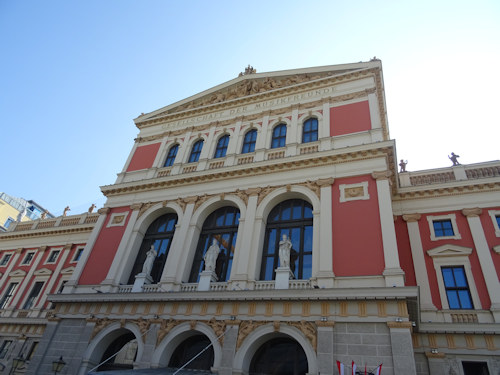
(Still one of the world’s most prestigious concert halls)
Various Strauss pieces also enjoyed their premiere in the Musikverein concert hall.
The Wiener Blut waltz, for example, premiered at a ball here under the composer’s own direction on April 22nd, 1873. Such was the applause that the orchestra gave two encores.
Palais Coburg

(Now one of Vienna’s leading hotels)
Two of Strauss’s anglophile dances premiered at Palais Coburg (at Coburgbastei 4 in the centre of town).
You might describe the Albion Polka and Windsor-Klänge waltz as musical diplomacy, since they allegedly formed part of attempts to improve relations between the Austrian and British empires in the middle of the 19th century.
Today’s palais is now a luxury hotel.
Theater an der Wien
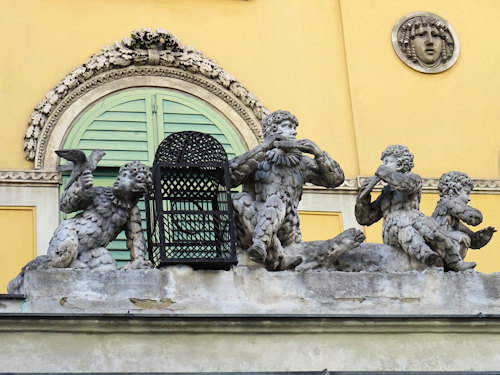
(The Papagenotor at the Theater an der Wien)
Some of Strauss’s compositions premiered at the Theater an der Wien, now one of Vienna’s three opera houses.
Die Fledermaus (1874), Das Spitzentuch der Königin (1880) and The Gypsy Baron (1885) operettas were all first performed here, for example.
The Rathaus
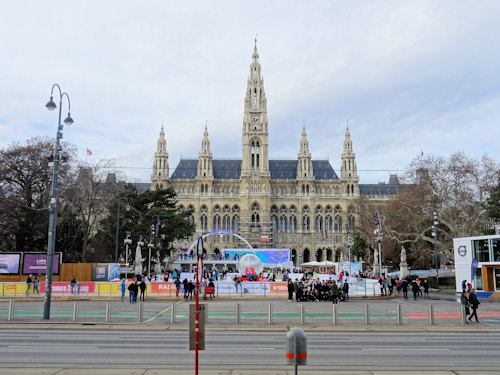
(City hall; the square in front hosts numerous large annual events)
Another notable venue hosting a premiere was the Rathaus (Vienna’s city hall). The Rathausball-Tänze waltz first played there in 1890 at a ball (the first ever “Ball der Stadt Wien”). Strauss dedicated the piece to his “hometown of Vienna”
Strauss: his life
Various Strauss biographical locations have remained intact in one form or another across the decades, with some open to the public.
Place of birth
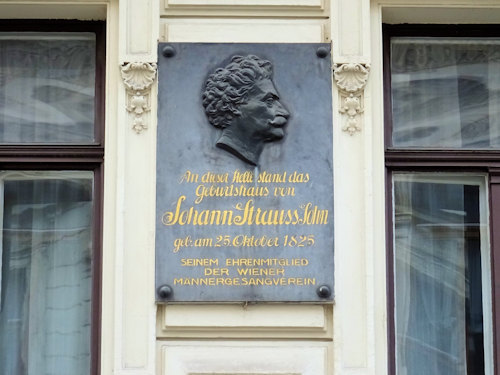
(A plaque reveals the importance of the location)
Vienna is slowly gearing up for a Johann Strauss festival year in 2025 to celebrate the composer’s 200th birthday: he was born on October 25th, 1825 in a suburb just outside the city in what is now Vienna’s 7th district.
At the time, the street was called Rofranogasse, but this later changed to Lerchenfelder Straße.
Visit number 15 on that street and you won’t find the original house. But you will see a plaque on the newer building that replaced it, which says (my rough translation):
The house Johann Strauss the son was born in on October 25th, 1825 stood at this location. Dedicated to their honorary member by the Wiener Männergesangverein
The Männergesangverein is a male voice choir founded in 1843 that still exists today.
School
Strauss attended the Schottengymnasium, an old and prestigious private school in the very centre of Vienna that continues today.
You can see the premises from the outside on the Freyung in the 1st district, within the abbey complex that includes a rather nice museum and church.
Wedding(s)
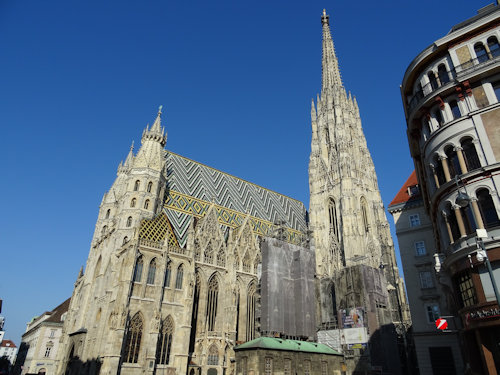
(Stephansdom)
Henrietta Treffz said “I do” to Strauss in Stephansdom (Vienna’s main cathedral) in 1862. He married his second wife, Angelika Dittrich, in Karlskirche (the huge baroque church overlooking Karlsplatz square) in 1878.
Both churches are open to the public, though you may need a ticket to see inside both in full.
The Strauss apartment
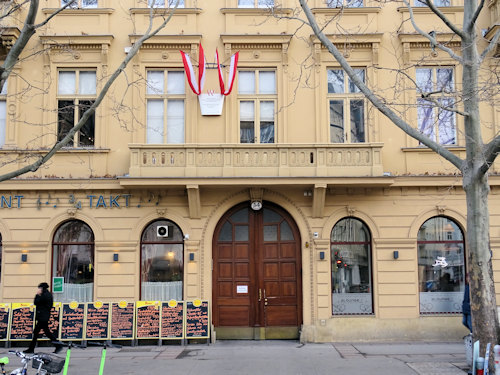
(Strauss wrote his most famous waltz inside this building)
One of the maestro’s violins sits alongside various other items from the Strauss household in the Strausswohnung, which provided Johann and Henrietta with a home for several years in the late 1860s.
This is where The Blue Danube escaped from musical imagination onto paper.
The Wien Museum maintains the apartment as a mini-museum, with various displays (in German and English), including other such former possessions as a grand piano and house organ.
The Fledermaus House
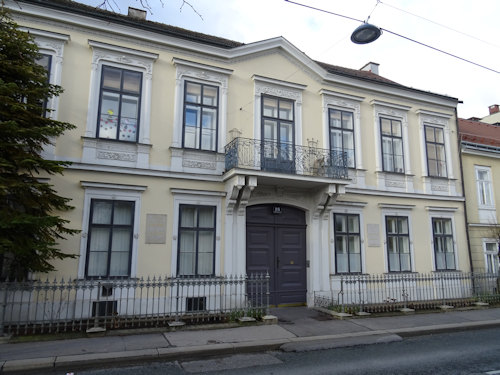
(Another original Strauss residence)
Another plaque hangs on the wall of the private Fledermaus house, since Strauss lived here between 1870 and 1878. Inside, he composed various operettas, including the famous Die Fledermaus.
Later occupants included the painter, Julius Schmid, and the composer, Carl Prohaska.
Johann Strauss Gasse
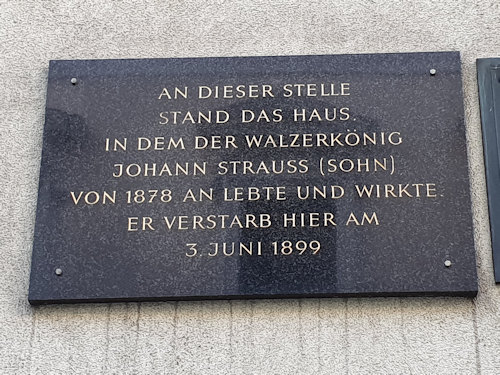
(Nothing remains of the composer’s final residence, but a plaque commemorates the location)
Strauss lived for many years in a two-storey city palais he had built at Johann Strauss Gasse 4. Back then, the name of the street was Igelgasse. This is also where he passed away in 1899.
Just a few days later, the city changed the street name in his honour.
Unfortunately, WWII bombs destroyed the building, so the one you see there now is a relic of the 1960s. A plaque outside notes that Strauss lived, worked, and died here.
The grave
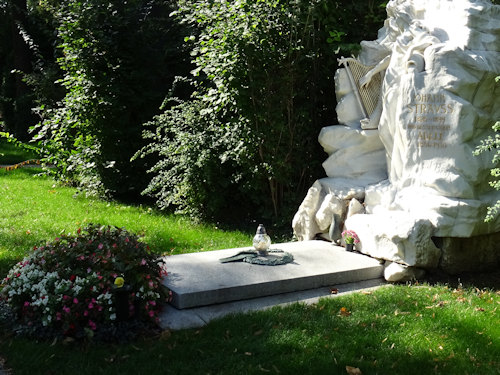
(Strauss occupies one of the many musician graves in the city’s largest cemetery)
Vienna’s Zentralfriedhof provides a final resting place for numerous famous figures of the past. This includes a cluster of composer graves (group 32A) that has Schubert, Brahms, Beethoven and Strauss all within a sotto voce whisper of each other.
Strauss’s third wife, Adele, is buried with him. Other members of the family occupy graves in the same cluster: his brothers Eduard and Josef, as well as his father.
Strauss: memorials & more
To dive deeper into the Strauss legacy and immerse yourself in musical Vienna, try…
The golden statue
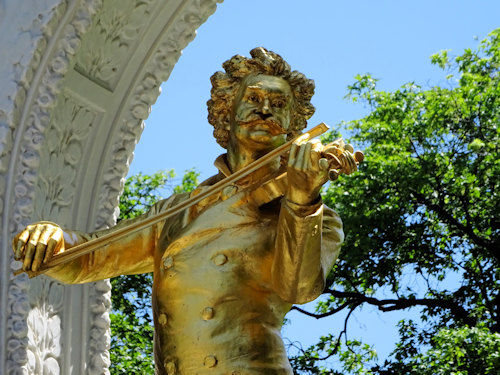
(One of Vienna’s most popular sights)
Certain attractions often have queues in front of them. Café Sacher and Café Central, for example. The Albertina Museum when Albrecht Dürer’s Young Hare comes out to play. And a golden statue in the Stadtpark.
This 1921 memorial to Strauss belongs on any list of iconic Viennese photo opportunities. Hence the queues. The statue shows the maestro playing a violin.
The House of Strauss

(The entrance to the new museum)
A new institution in the fully-renovated Casino Zögernitz with a modern interactive exhibition on the Strauss dynasty, in-house concerts and a restaurant with garden. A timely arrival given the Strauss Museum Wien has closed.
As mentioned earlier, Strauss actually played here too.
Haus der Musik

(A place full of musical memorabilia)
Vienna’s museum of sound has an entire room dedicated to the composer’s biography and work. As a fun bonus, you can roll virtual dice to compose your own unique waltz.
The Strauss star
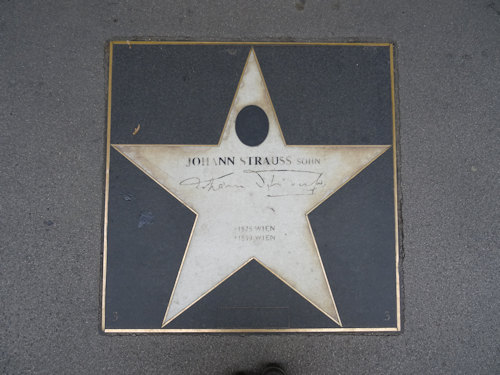
(A little faded but still legible)
Finally, wander around Vienna’s Ringstrassen boulevard and you might come across a Strauss star in the pavement. Find it at Kärntner Ring 12, outside a ticket office of the Wiener Philharmoniker.
Happy waltzing.